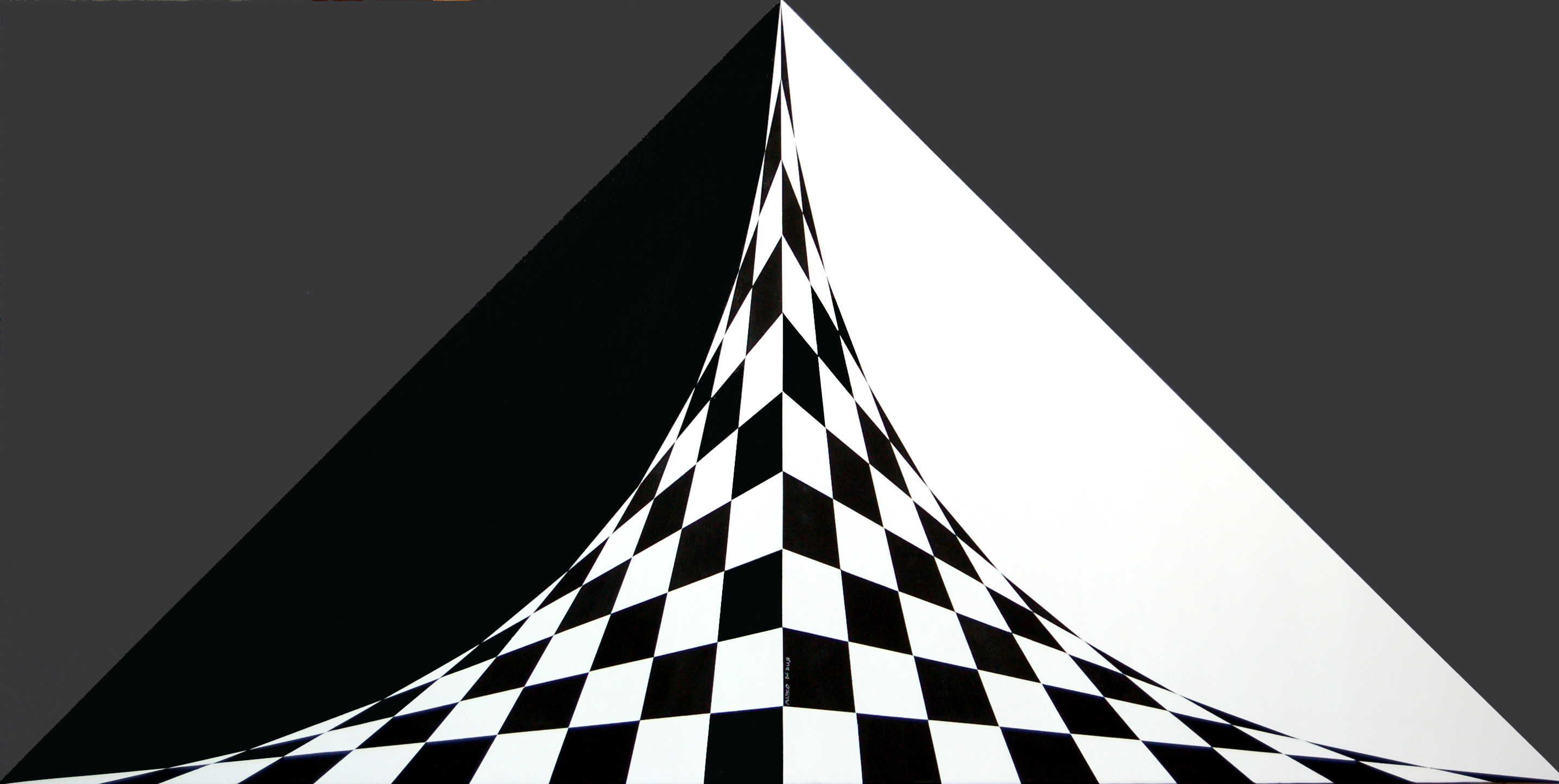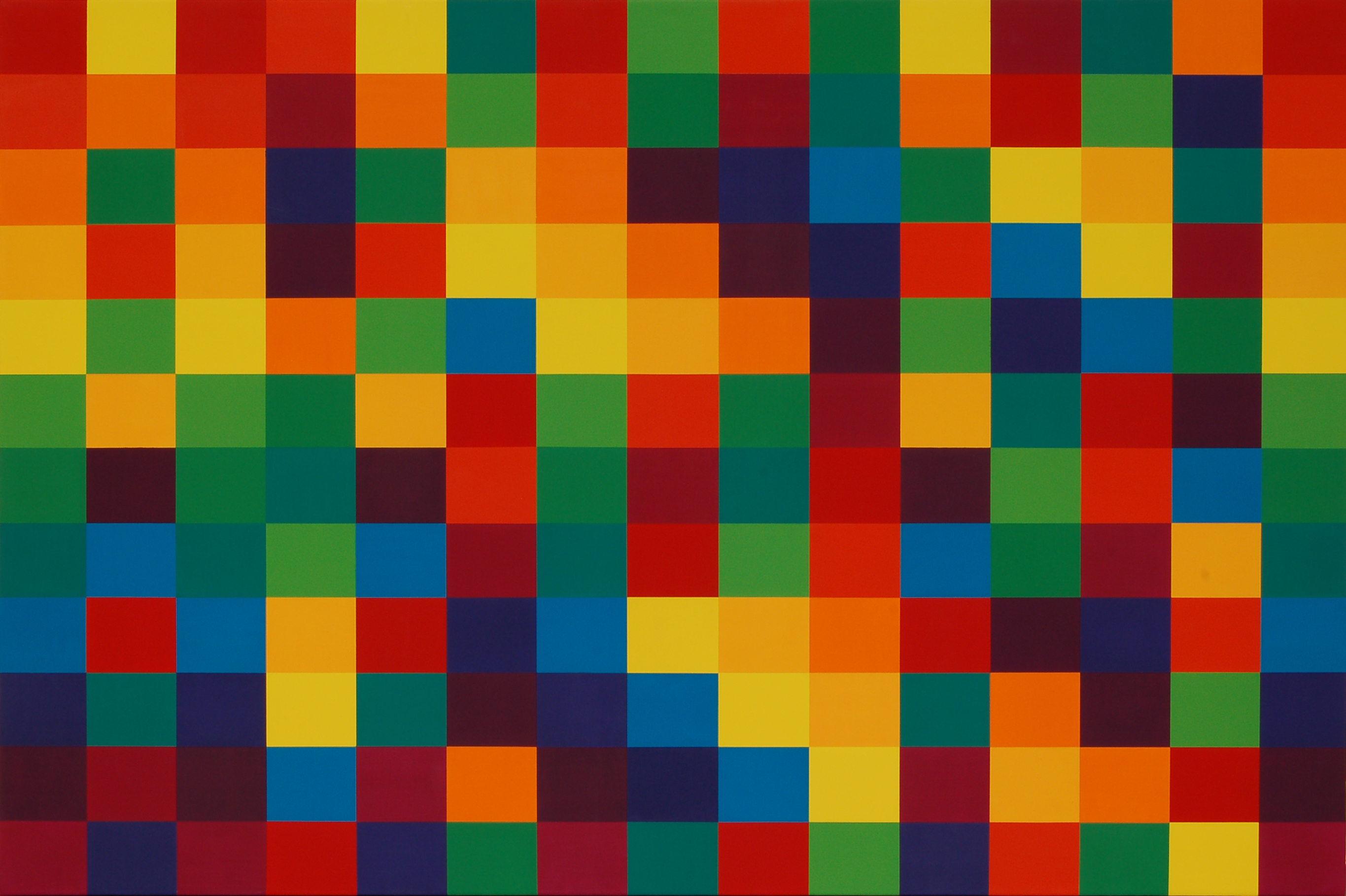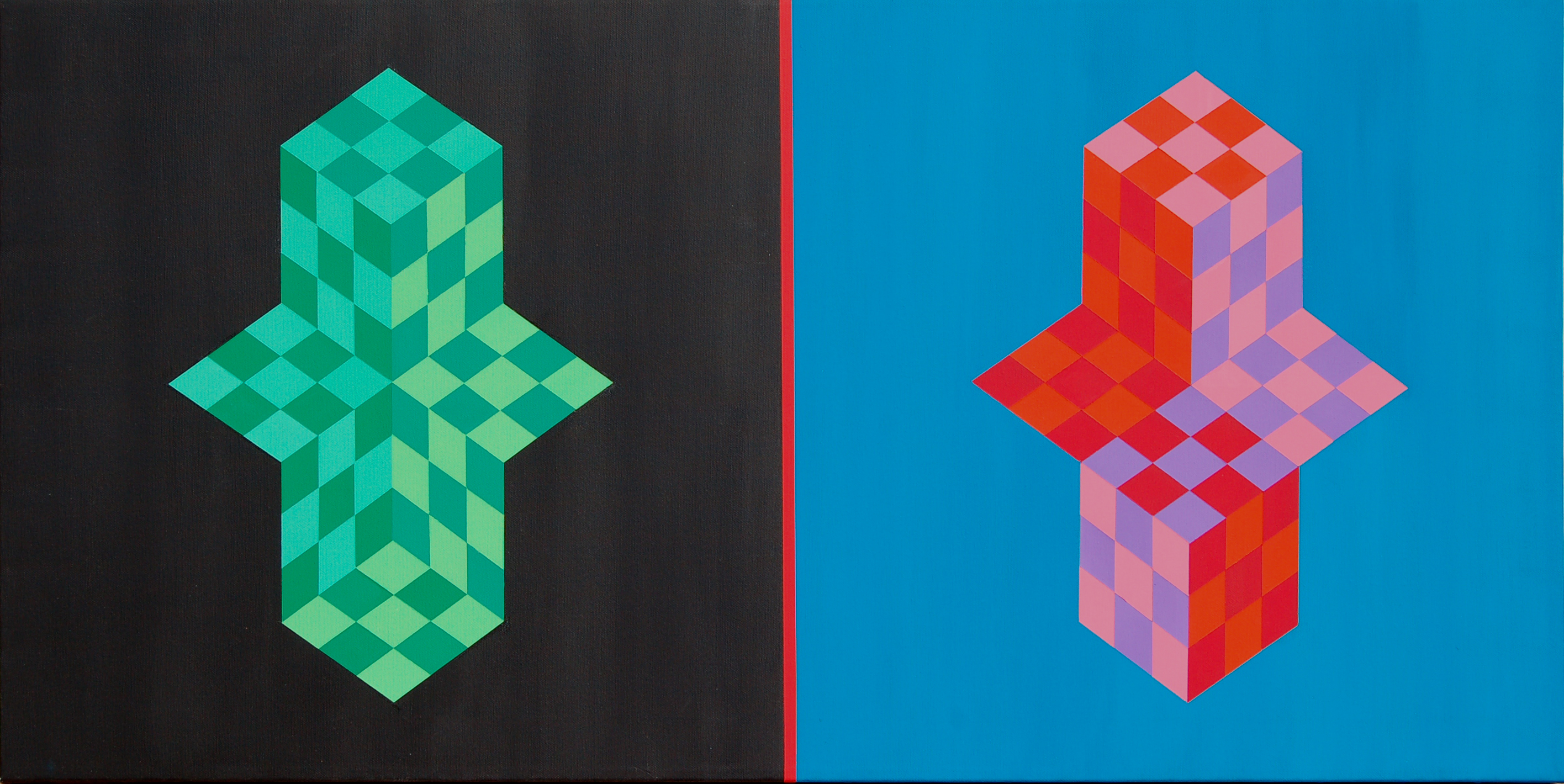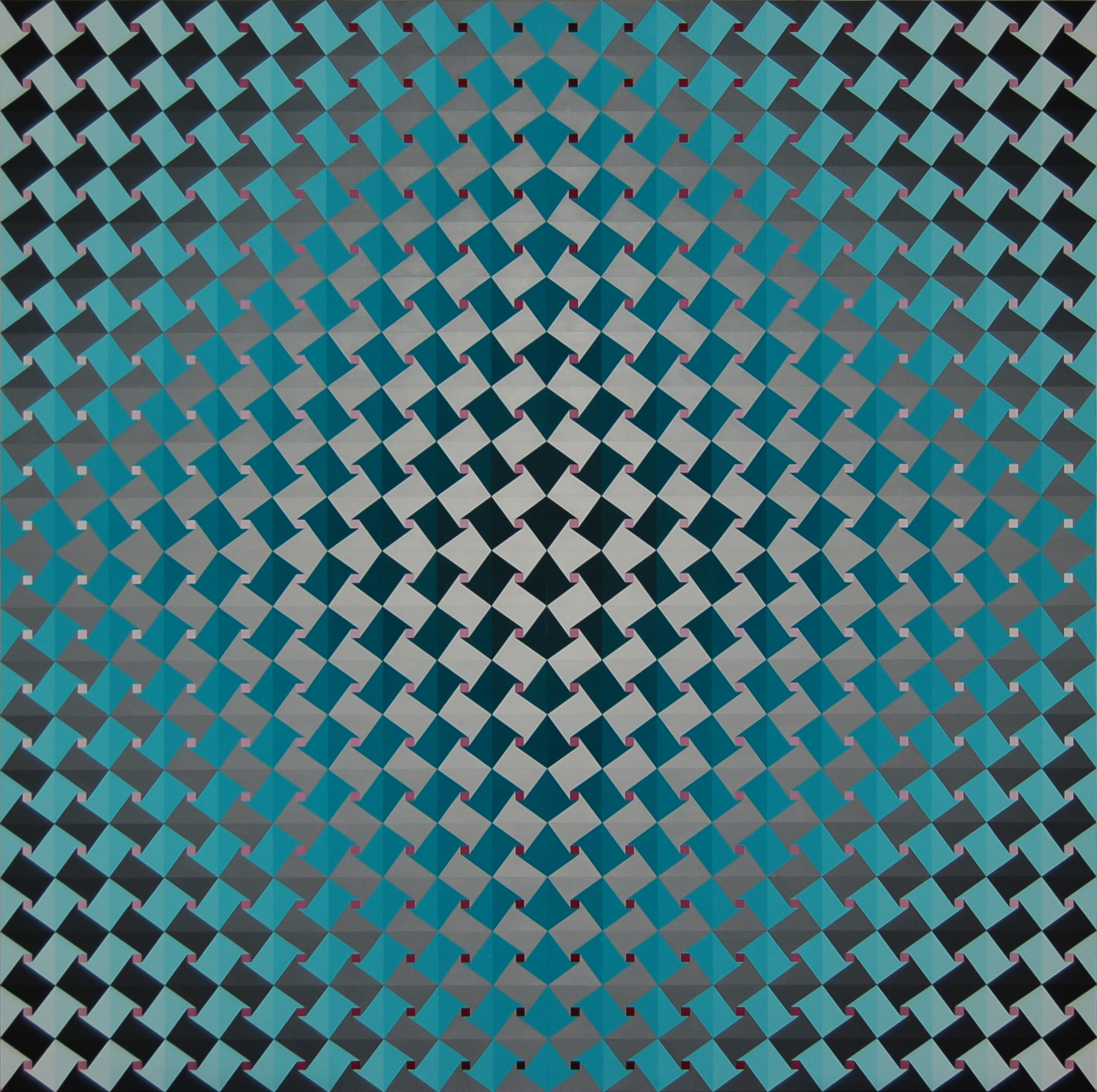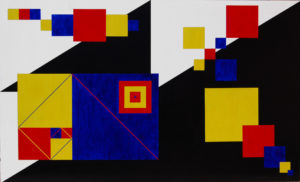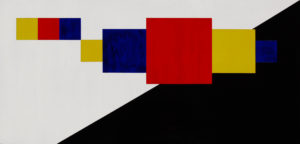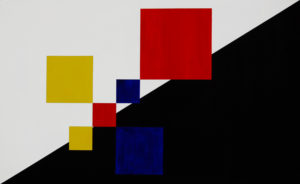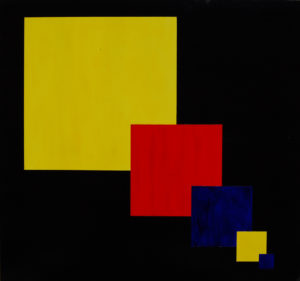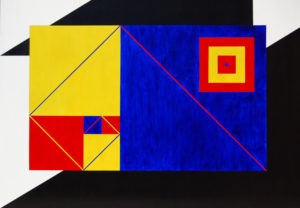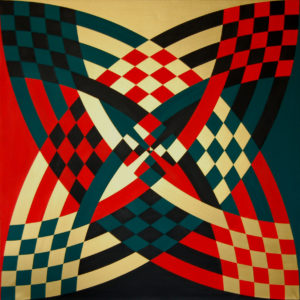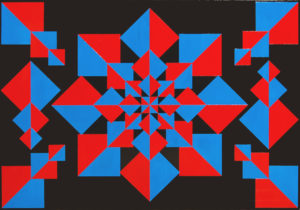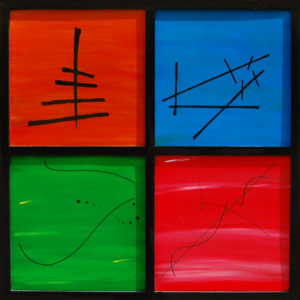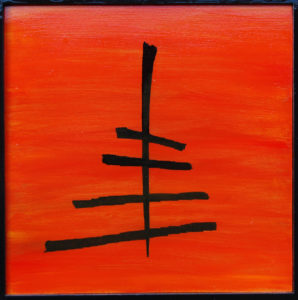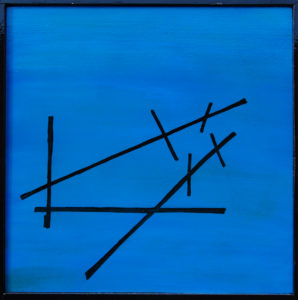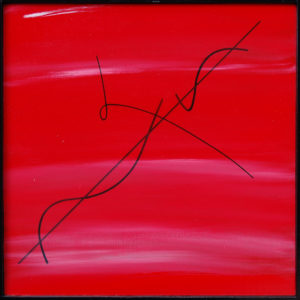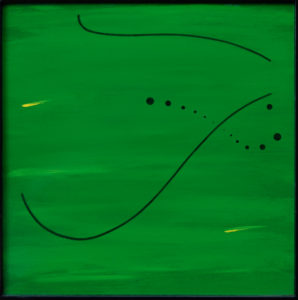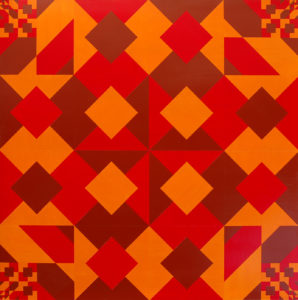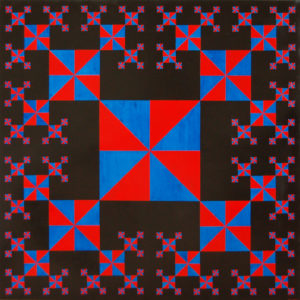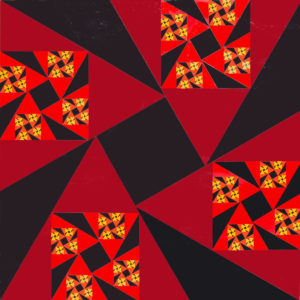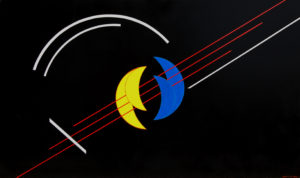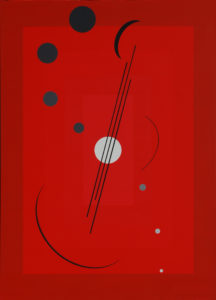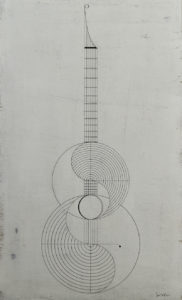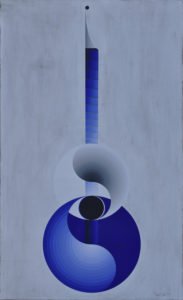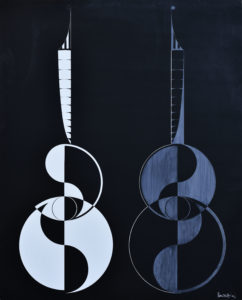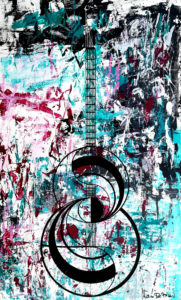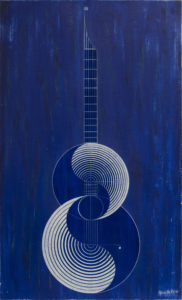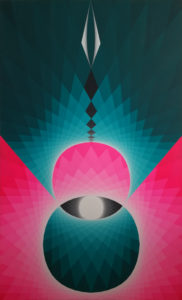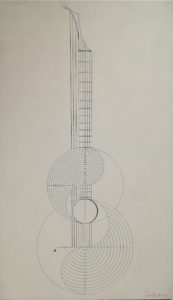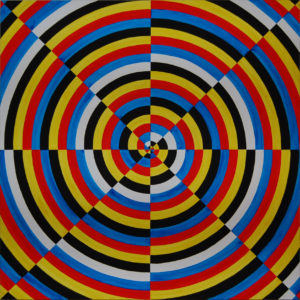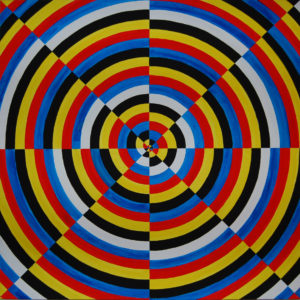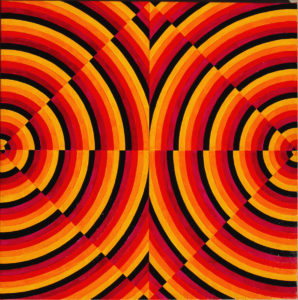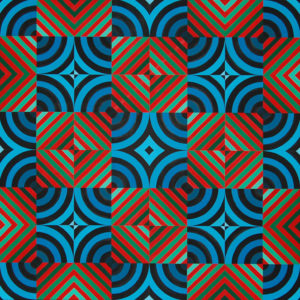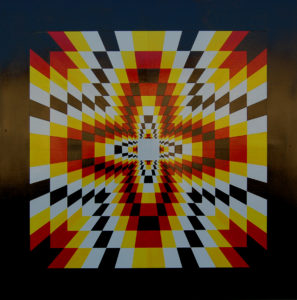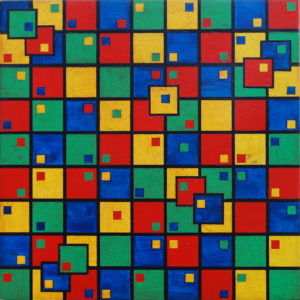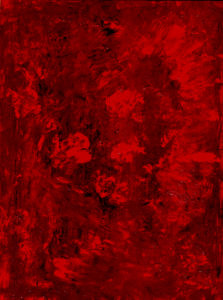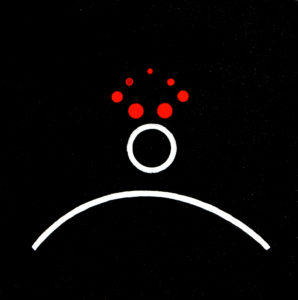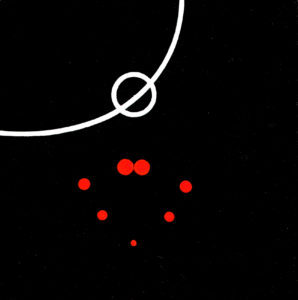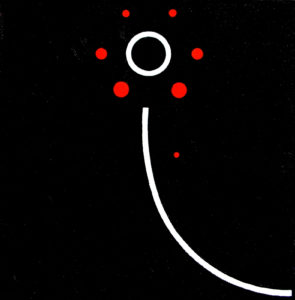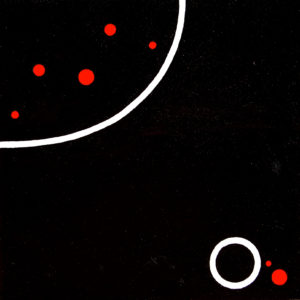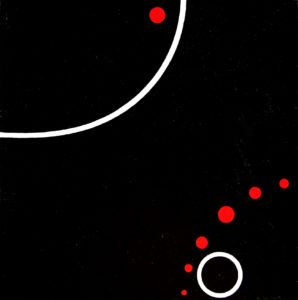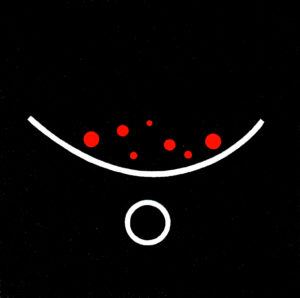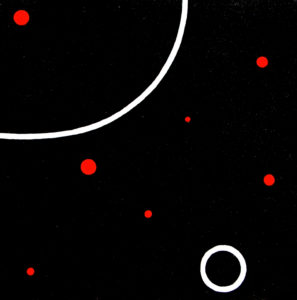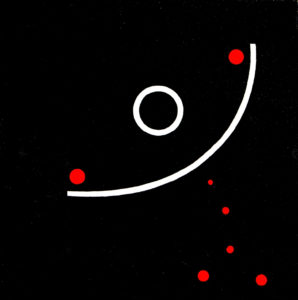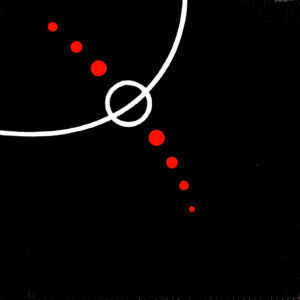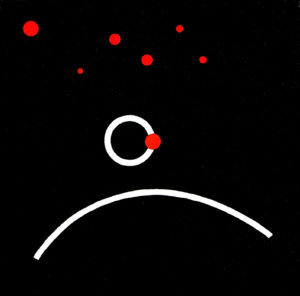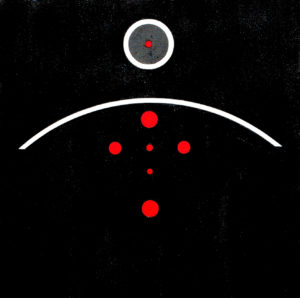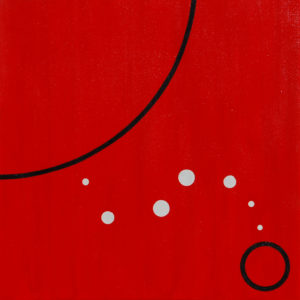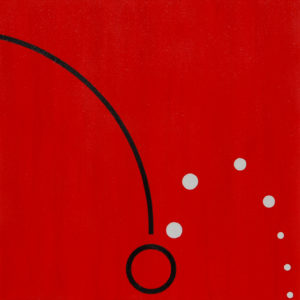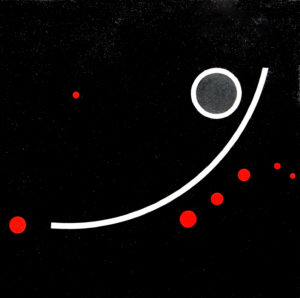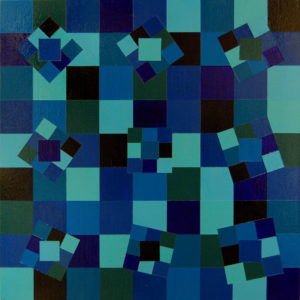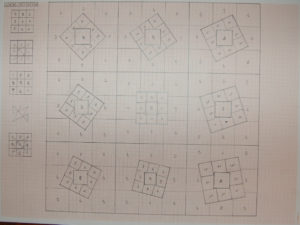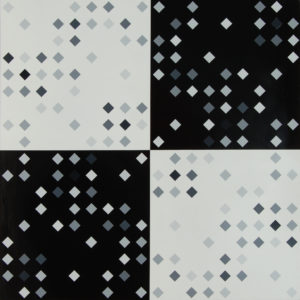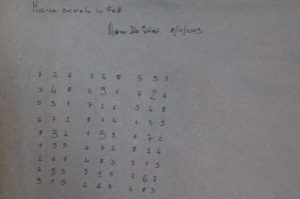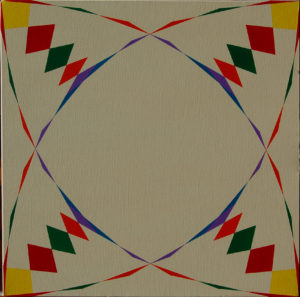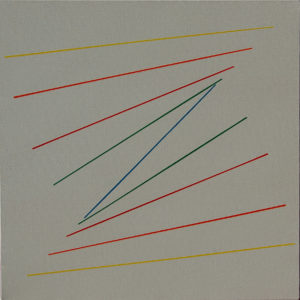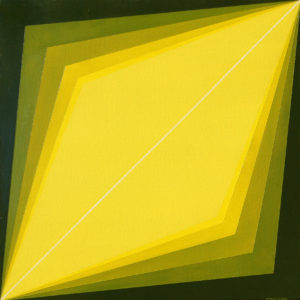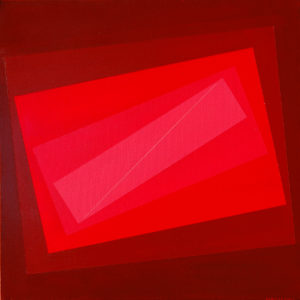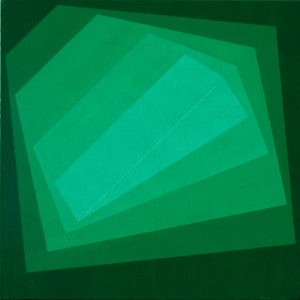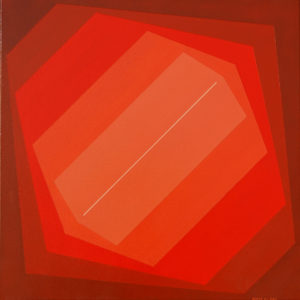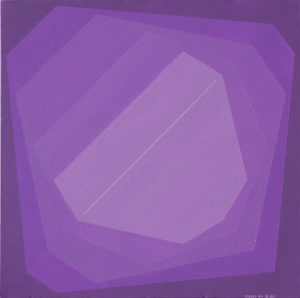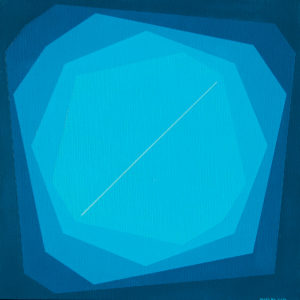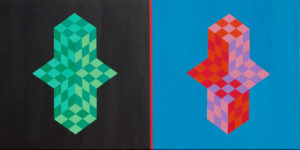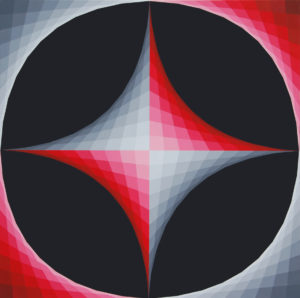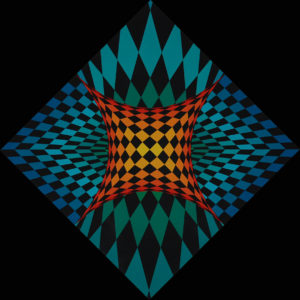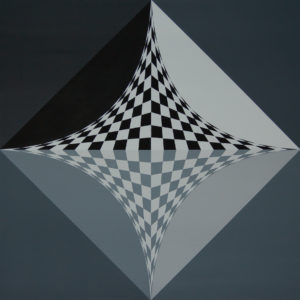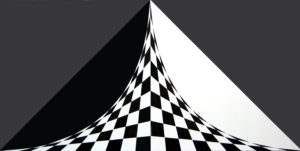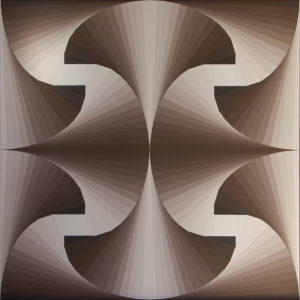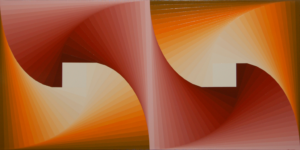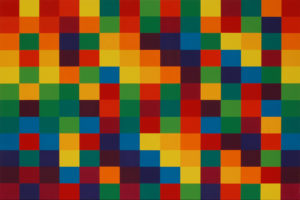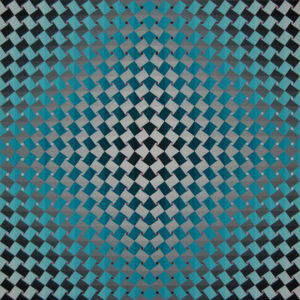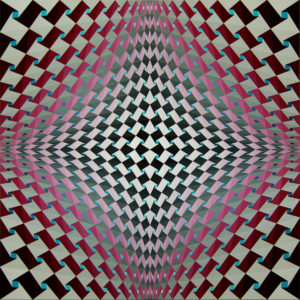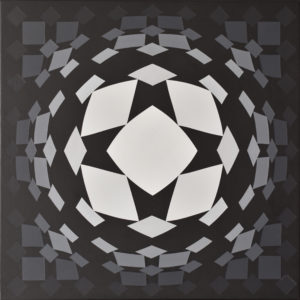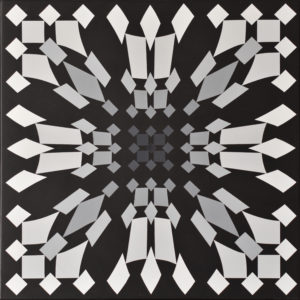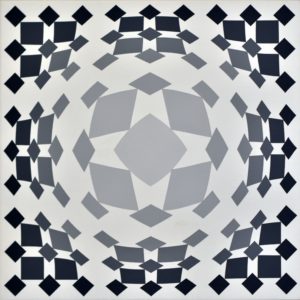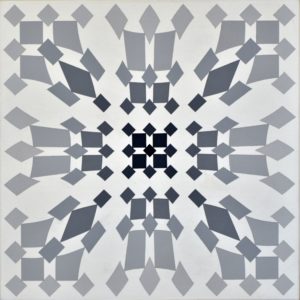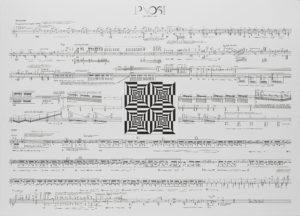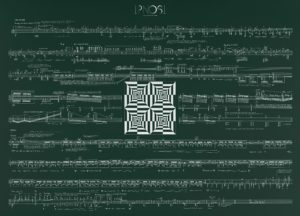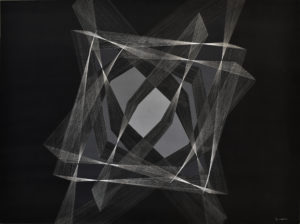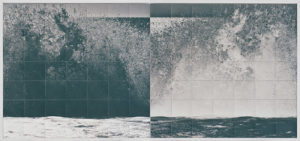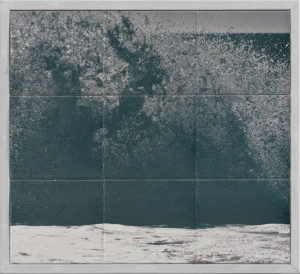PAINT
After that, the concept is listened to and worked out in the soul. This one, for its own nature, reacts through emotions. The energy employed to catalyze and combine the twofold action of the concept and of the feeling gives origin to the opus.
The opus, generated by the formal understanding of the concept, adds to this last one the ability to reproduce the emotion that is reproduced by the concept itself. The opus opens the doors of the heart and leads the listener to the understanding of ultra-sensitive emotions. The common language, which is created by the man to describe the earthly world, cannot explain the above mentioned emotions. The piece of art shows the listener the path which the emotion has to be lead to. The shape leads the emotion to the discovery of the archetype which the artist has taken inspiration from.
Starting from the concept (thesis) and letting the emotion follow to this (antithesis), the artist will be able to give shape to an opera so that it allows the man to make progress in perceiving what the common language cannot reveal to him yet.
The so created piece of art, given by the union of music and colour, will be therefore the necessary means to go back to the archetype from which it has been created.
OMAGGIO A KANDINSKY
Phonocromatic work made by the union of paintings, music (quintet for guitar and string quartet) and lights (blu, red and yellow). This work arises from the inner need of expressing feelings that can synthetically born from listening to a musical piece and the emotional-spiritual charge that a shape and a color can create once they have been put on a paint. The aim is to highlight not only the inner sound of each single color through the act of paint, but to give every color and shape a sound, by musical instruments, creating, for the spectator, a visual and auditory game which leads to a multi-sensory perception of the treated elements.
- Omaggio a Kandinsky, 168×102, Acrylic on wood
- Omaggio a Kandinsky I, 84×40, Acrylic on wood
- Omaggio a Kandinsky II, 79×48, Acrylic on wood
- Omaggio a Kandinsky III, 60×55, Acrylic on wood
- Omaggio a Kandinsky IV, 93×65, Acrylic on wood
CANONI
Studies on the regular division of a plan.
- Canone a 4, 100×100, Acrylic on canvas
- Canone Bicromo, 93×65, Acrylic on wood
4 MOVIMENTI
Pictorial work linked to the score "Four Aphorisms". Pictograms have become a source of inspiration for a short piece, composed of four distinct, but complementary, musical fragments that follow in circles, giving rise to meaningful discourse.
- 4 Movimenti, 66×66, Acrylic on wood
- Movimento in Arancio, 30×30, Acrylic on wood
- Movimento in Blu, 30×30, Acrylic on wood
- Movimento in Rosso, 30×30, Acrylic on wood
- Movimento in Verde, 30×30, Acrylic on wood
EUD EIRES
Phonocromatic work made by the union of painting and music. The picture represents the formal structure and the thematic source of the piece for three guitars named: Eud Eires.
- Eud Eires – variazione ritmica di un quadrato, 96×96, Acrylic on wood
FRACTAL
In terms of structure, this work could be assimilated to a minimalist piece. Two notes, Do and Fa, give rise to an increasingly complex structure. Thus, it goes from the two fundamental notes to their submultiples, that is, to their fundamental harmonics.
As the initial module becomes smaller, it becomes more complex. The more harmonics that are generated, the broader the range of sonic material that is used becomes. The initial figure multiplies itself in a continuous and customarily infinite germination, creating ever-changing rhythms. Only the edges of the painting and the practical impossibility of technically being able to continue curb the work’s exponential multiplication. Likewise, the musical structure expands, creating thematic overlaps, and varying, customarily infinite polyrhythmic combinations. It is only the need to place the work in a time frame that leads to a limited the number of possible combinations. However this does not mean that the score cannot satisfy this need by ensuring that the written music determines a different execution from time to time.
So the painting transforms in a continually evolving work and music is used to explain an essence that is infinite. Once again, music and painting converge in an effort to explain and render the archetype that generated them emotionally experiential. Marco De Biasi - December 7, 2006
- Fractal SRB, 145×145, Acrylic on wood
- Fractal TBG, 150×150, Acrylic on wood
CHITARRE FONOCROMATICHE
- Chitarra fonocromatica, 70×120, Acrylic on wood
- Chitarra Fonocromatica n°2, 180×120, Acrylic on canvas
- Chitarra Fonocromatica n°3, Acrilic and ink on board, 60×99
- The blue guitar, Acrilic on board, 60×99; (Chitarra fonocromatica n°4)
- La guitarra oscura, Chitarra fonocromatica n°5, Acrilic and gypsum on board, 99×80
- Chitarra Fonocromatica n°6, Acrilic on board and ink, 40×24
- La chitarra graffiata, Chitarra fonocromatica n°7, Acrilic and engraving on board, 99×60
- Chitarra Fonocromatica n°8 Acrilic on board 148,5×90
- Chitarra postromantica, Chitarra fonocromatica n°9, 60×99, Acrilic adn ink on borad
HIPNOSIS
- La espiral eterna, Omaggio a Leo Brouwer, 100×100, Acrylic on canvas
- Paradosso spazio-temporale, 100×100, Acrylic on canvas
- Consonanza, 50×50, Acrylic on canvas
- Hipnosis, 100×100, Acrylic on wood
PORTA INTERDIMENSIONALE
- Porta Interdimensionale, 98×98, Acrylic on wood
COMBINAZIONE RITMICA
- Combinazione ritmica, 29,5×29,5, Acrylic on wood
CUORE SONORO
- Cuore sonoro, 15×20, Acrilico su tavola
IL POETA
''Se fossi un vero poeta potrei cantare la vita di questo istante
e sciogliere il sapore di un bacio in un verso d’amore
raccogliere i petali di un fiore per ornare il tuo sorriso
dare ad ogni stella un nome e a te il nome di una stella
riuscirei a vedere il grande nel piccolo e il più piccolo nell’infinitamente piccolo
così che il piccolo diventerebbe grande e il grande infinitamente grande
saprei mescolare i mali della mia vita in un bicchier di vino
per poi berlo con quel po’ di amaro che lascia un buon sapore in bocca
e come un giocoliere raccoglierei ciò che di me ho lasciato nel mondo alla rinfusa
per farlo girare
pesarlo e dargli un senso di equilibrio
ma sono solo un uomo che ama la sua musa
e confuso e malinconico si aggira tra la nebbia del mare
in una notte di eclissi di luna
cercando parole e versi che la faranno innamorare''
- Il Poeta, 30×30, Acrylic on canvas
- Il Bacio, 30×30, Acrylic on canvas
- Il Fiore, 30×30, Acrylic on canvas
- Cassiopea, 30×30, Acrylic on canvas
- Macro Cosmo e Micro Cosmo, 30×30, Acrylic on canvas
- La Coppa della Vita, 30×30, Acrylic on canvas
- Dispersione, 30×30, Acrylic on canvas
- Il Giocoliere, 30×30, Acrylic on canvas
- L’ Eclissi, 30×30, Acrylic on canvas
- L’unione, 30×30, Acrylic on canvas
LA VITA UMANA
This work represents four constitutive states of every human existence through a symbolic language created with simple geometric elements (seven circles, a circular crown and a circle arc) that from time to time take different forms. The cross represents the difficulties that every man faces during his life. The cross is on Earth (circle arch), above the earth is the sky and within God. The umbilical cord is that element connecting man to the Great Mother. Bouncing is the casualty that man must constantly confront. The ship is a symbol of the journey that each of us has to accomplish. In the picture there is a prow of a ship cutting a wave.
- La Croce, 60×60, Acrylic on canvas
- Il Cordone Ombelicale, 60×60, Acrylic on canvas
- Il Rimbalzo, 60×60, Acrylic on canvas
- La Nave, 60×60, Acrylic on canvas
LABIRINTO
The magic square becomes the expedient through which to create serial chromatic structures.
- Labirinto n1, 27×27, Acrylic on wood
- Labirinto, Project
- Musica Seriale in fa#, 81×81, Acrylic on wood
- Labirinto, Project
MEDITAZIONI
Two or three dimensions?
I hereby explore the possibility of organizing space so that two-dimensionality and three-dimensionality arise not so much from a particular effect associated with prospective, but rather from the desire to relate to the figure in front of me. This space should be halfway between the 2nd and the 3rd dimensions, so that the individual decides to which one of them they belong, not being, in fact, neither the first nor the second.
For this to happen it is necessary to relate the concept of space to that of time understood as a moment that is necessary to meditate around the dimension in which the figure we are observing is located.
These works are therefore called MEDITAZIONI because they are aimed at inducing meditations on the relationship that passes between and correlates space with time. While the figures live in space, sound lasts in time. Is it possible to sonically create 2D and 3D effects? When does this occur? What relationships can be established between a figure that does not take up a precise spatial dimension and a score that should express this concept? The music should be written in such a way as to create a difference between the frontal expansion and horizontal penetration of sound. Sound is both time and space. The first event is set loose from second when the notes flow smoothly and naturally without emphasis and without emotional involvement, describing lines and planes which all lie on a single dimension: the frontal nature of sound. The second event is created when the notes fill out with pathos and depth, conquer space, becoming one with the time.
Upon listening, one is able to meditate on the meaning of sound not only in relation to time but also to space, leading one to question the dimension in which we find ourselves: in that which allows us to appreciate the musical event only on an aural level, or in that which allows us to spatially live sound as a moment of complete participation, on both aural and spiritual levels.
The sound takes possession of space and the figures move over time. The two dimensions (sound/shape or space/time) transform, running towards, but never reaching each other, and in this way becoming something other than themselves: a new dimension that exists solely as intuited, as it is meditated.
- Meditazione n°1 Idea originale, 50×50, Acrylic on canvas
- Meditazione n°2, 50×50, Acrylic on canvas
- Meditazione n°3, 50×50, Acrylic on canvas
- Meditazione n°4, 50×50, Acrylic on canvas
- Meditazione n°5, 50×50, Acrylic on canvas
- Meditazione n°6, 50×50, Acrylic on canvas
- Meditazione n°7, 50×50, Acrylic on canvas
- Meditazione n°8, 50×50, Acrylic on canvas
OPTICAL TWINS
- Optical Twins, 100×50, Acrylic on canvas
CARTESIO
In these works, the Cartesian axes are used to give illusory prospect forms, playing on time-space concepts that are situated between second and third dimensions. In particular, "Il confine dello spazio e del tempo ed il suo doppio" is a phonocromatic work associated with the piece "Concert for three guitars and orchestra".
- Energia n°1, 120×120, Acrylic on canvas
- Energia n°1, D141, Acrylic on canvas
- Il Confine dello spazio e del tempo e il suo doppio, 120×120, Acrylic on canvas
- Il Confine dello spazio e del tempo, 100×50, Acrylic on canvas
CONI D'OMBRA
- Cono D’ombra, n°1 60×60, Acrylic on canvas
- Cono-Dombran°2, 120×60, Acrylic on canvas
RAPPORTI ARMONICI CROMOFONICI
The paint is the chromatic representation of the phonocromatic scales (that is, given by the association of sounds and colors) obtained following the Itten chromatic circle.- Rapporti armonici cromofonici, 120×80, Acrylic on canvas
SPAZI INTERDIMENSIONALI
- Gravitazione quadridimensionale, 100×100, Acrylic on wood
- Magma Interdimensionale, 100×100, Acrylic on wood
- Esplosione Negativa, 27×27, Acrilic on board
- Cartesio Antracitico,27×27,Acrilic on board
- Vuoto Esplosivo, 27×27, Acrylic on wood
- Cartesio Galattico, 27×27, Acrylic on wood
IPNOSI
Artistic manuscript of the same name piece.
- IPNOSI, 100×70, Ink on cardboard
- IPNOSI, 60×40, Negative print on cardboard
- Ad un passo dalla trance; Acrilic on board and engravng,90×120
- HIC ET NUNC – Original work, 198×92, Mixed technique
- HIC ET NUNC, 42×39, Mixed tecnique

